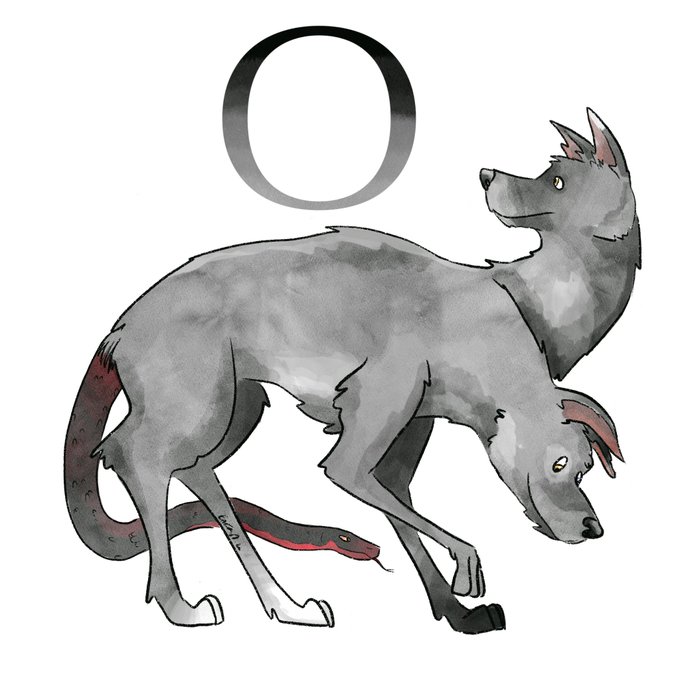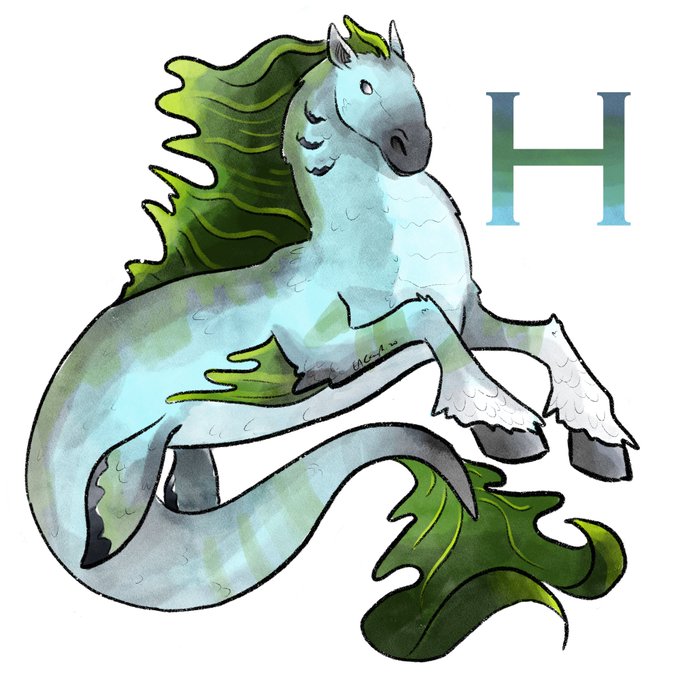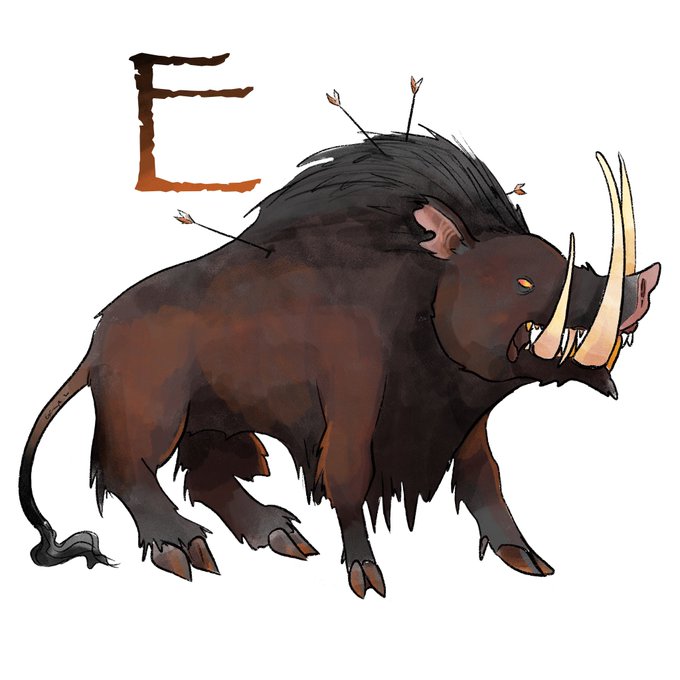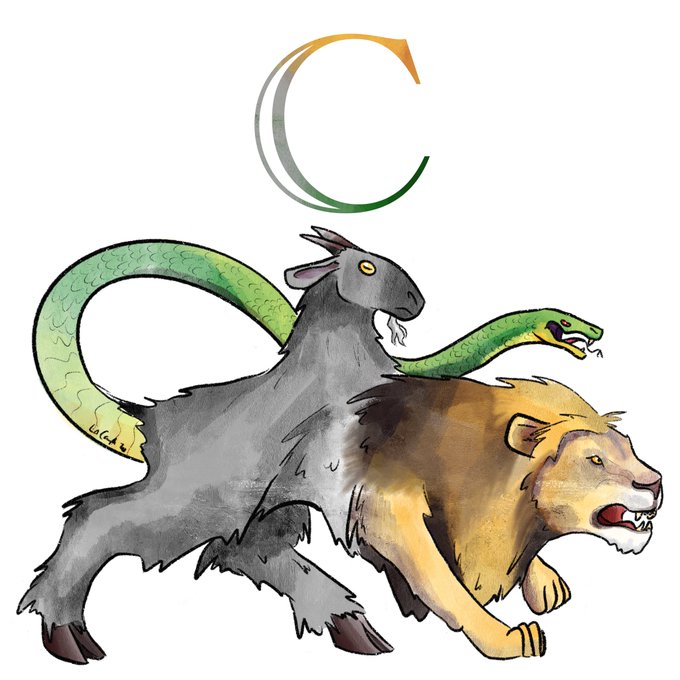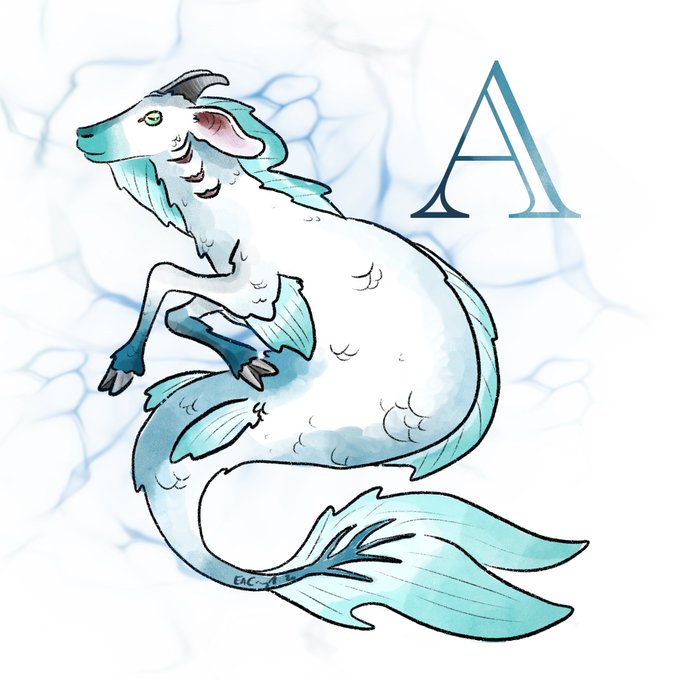MythologyAtoZのTwitterイラスト検索結果。 13 件
X is for Xixi Zhu Yi
In Chinese mythology, it was believed that eating the ten-finned Xixi Zhu Yi would cure jaundice.
Artwork (c) Lizzie Cavanagh
#MythologyAtoZ #xixizhuyi #chinesemythology #china #illustration #digitalart #procreate
U is for Unicorn
In the Middle Ages, cups which were allegedly made from the horn of a unicorn were highly valued by nobility as a protection against poisoned drinks.
Artwork (c) Lizzie Cavanagh
#MythologyAtoZ #unicorn #illustration #mythology #medieval #digitalart #procreate
S is for Scylla
In Greek mythology, Scylla was a sea-monster who haunted the rocks of a narrow strait opposite the whirlpool of Charybdis.
Artwork (c) Lizzie Cavanagh
#MythologyAtoZ #Scylla #greekmythology #illustration #digitalart #procreate #mythology
R is for Redcap
Popular in Border folklore, the redcap) is a malevolent goblin that is well-known for soaking his cap in the blood of his victims.
Artwork (c) Lizzie Cavanagh
#MythologyAtoZ #redcap #goblin #Englishfolklore #folklore #illustration #digitalart #procreate
P is for Pegasus
Pegasus, in Greek mythology, was a winged horse who sprang from the blood of the Gorgon Medusa as she was beheaded by the hero Perseus.
Artwork (c) Lizzie Cavanagh
#MythologyAtoZ #pegasus #greekmythology #perseus #illustration #digitalart #procreate
O is for Orthros
In Greek mythology Orthros was the two-headed serpent-tailed dog who famously guarded the cattle of the giant Geryon before being slain by Heracles.
Artwork (c) Lizzie Cavanagh
#MythologyAtoZ #orthros #greekmythology #illustration #digitalart #procreate
L is for Loch Ness Monster
Affectionately known as “Nessie”, the Loch Ness Monster was first ‘officially’ photographed in the Scottish Highlands in 1934.
Artwork (c) Lizzie Cavanagh
#MythologyAtoZ #lochnessmonster #nessie #scotland #illustration #digitalart #procreate
J is for Jackalope
In North American folklore, if you want to catch a jackalope it can be enticed with whiskey. 🥃
Artwork (c) Lizzie Cavanagh
#MythologyAtoZ #jackalope #northamericanjackalope #northamerica #americanfolklore #illustration #digitalart #procreate
I is for Imp
Imps are small devil-like creatures which are seen as being more mischievous than evil.
Artwork (c) Lizzie Cavanagh
#MythologyAtoZ #imp #mischief #illustration #folklore #digitalart #procreate
H is for Hippocampus
The hippocampus - half horse and half fish - was the steed of two most important deities of the Greek and Roman mythology, Poseidon and Neptune.
Artwork (c) Lizzie Cavanagh
#MythologyAtoZ #hippocampus #mythology #digitalart #procreate #illustration
E is for Erymanthian Boar!
In Greek mythology, the Fourth Labour of Heracles was to defeat the Erymanthian Boar.
Artwork (c) Lizzie Cavanagh
#MythologyAtoZ #erymanthianboar #twelvelaboursofheracles #heracles #mythology #greekmythology #illustration #digitalart #procreate
C is for Chimera!
In the Iliad, Homer referred to the Chimera as “a thing of immortal make, not human, lion-fronted and snake behind, a goat in the middle.”
Artwork (c) Lizzie Cavanagh
#MythologyAtoZ #chimera #greekmythology #mythology #illustration #digitalart #procreate
A is for Aigikampoi
Half-fish and half-goat, this creature was used in ancient Mesopotamian culture to represent Enki, the god of water.
Artwork (c) Lizzie Cavanagh
#MythologyAtoZ #aigikampoi #etruscan #mesopotamia #mythology #mythandlegends #illustration #digitalart






